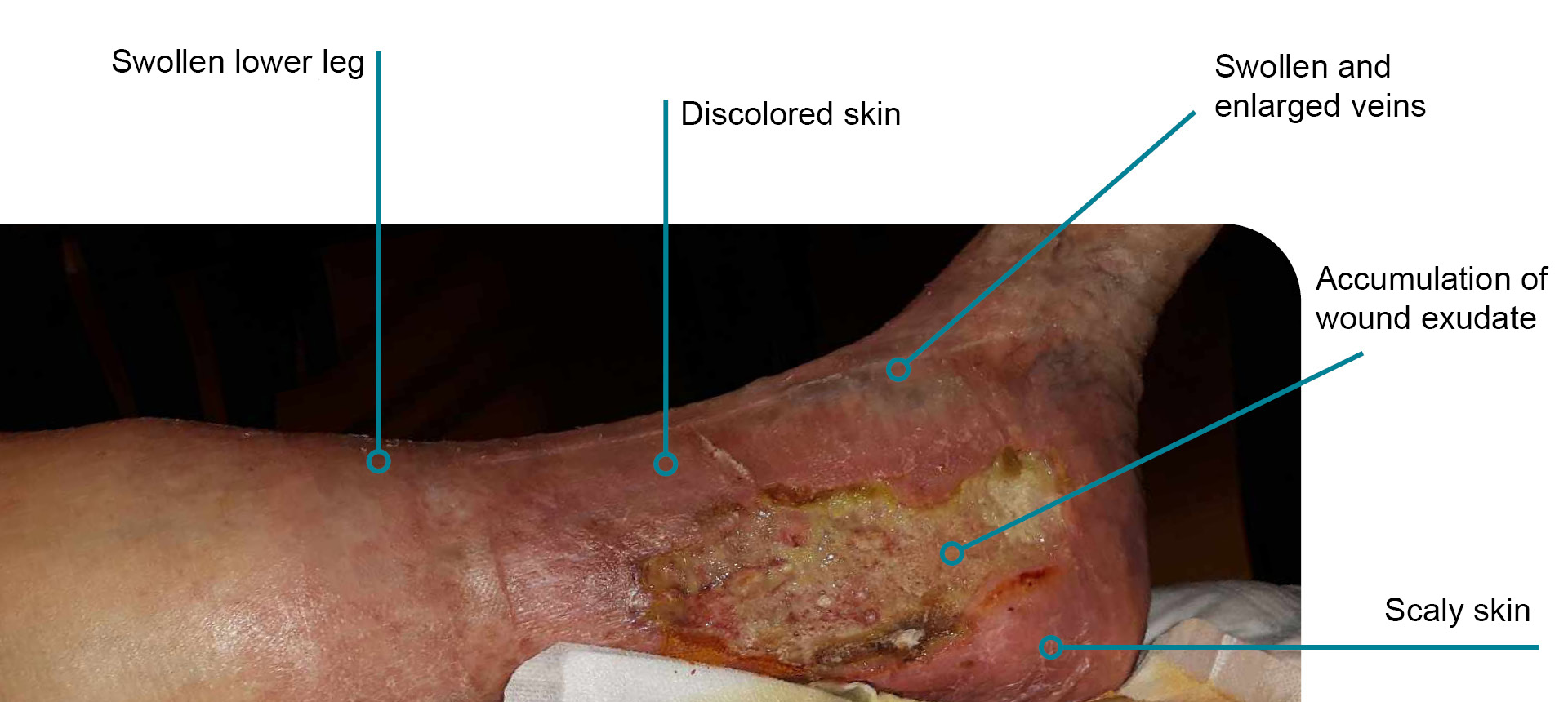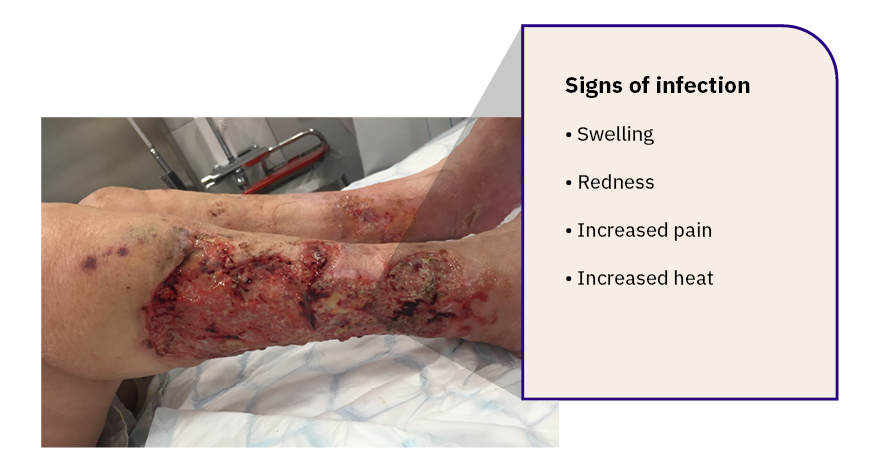One of the first signs of a venous leg ulcer is skin discoloration and a darkening of the skin tone around the wound. The skin may also become firmer, creating a sensation that the leg feels hard and heavy. Other symptoms include:

Open wounds are susceptible to infection due to bacterial growth. If bacteria penetrate deeper than the surface of the ulcer, an infection can occur. Infected wounds often lead to pain and general discomfort in a patient’s daily life. Additional signs of infection may include redness, excessive exudate, unpleasant odor, and increased swelling. When a venous leg ulcer exhibits signs of infection, it should be evaluated by a physician to determine the need for a wound culture or potential antibiotic treatment.

Individuals at risk of developing venous leg ulcers also face a high likelihood of experiencing recurrence. Studies indicate that up to 70% of patients with a history of venous insufficiency may have the condition return. In these situations, it is crucial to address the underlying cause of the ulcers.
For the affected individuals, a “chronic” or hard-to-heal wound can lead to significant distress. The pain associated with such wounds can be a major source of suffering. Additionally, social limitations and feelings of isolation are common, as pain can restrict mobility. The odor from an infected wound may also lead to discomfort and embarrassment.
From a broader health-economic perspective, the increasing number of elderly individuals presents a significant challenge to the healthcare system. The cost of treating hard-to-heal wounds is relatively high for many care providers, including wound clinics, primary care centers, and home healthcare services.
Given these considerations, it is vital to understand how to treat venous leg ulcers effectively and to implement preventive strategies.
Harding, K., et al. Simplifying venous leg ulcer management: Consensus recommendations. Wounds International, 2015. Available for download at www.woundsinternational.com
Höglin, G., Freijd, H. A cohort study to evaluate the benefit of using DryMax Extra superabsorbent wound dressings in a population with exuding wounds, 2011; Poster presentation, Harrogate.
Lindholm, C. MD, Professor, Sophiahemmet University, Stockholm, 2018. www.vardhandboken.se (Accessed 2020-02)
Lindholm, C. Wounds. 4th ed., rev. 2. Studentlitteratur AB, 2018.